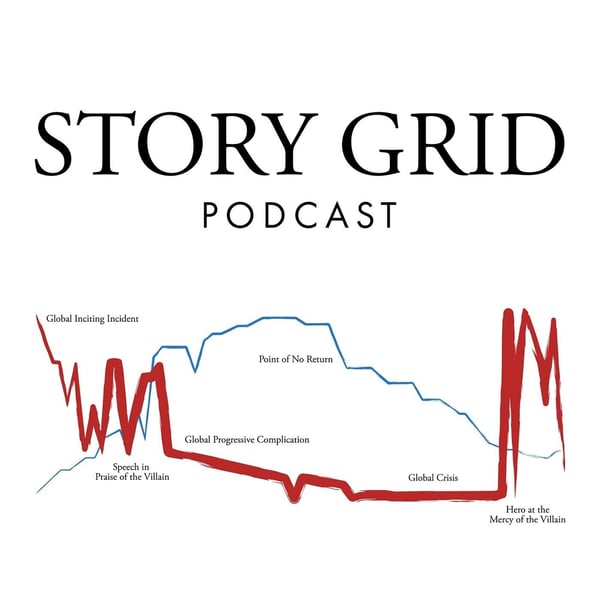Who's the Most Guilty Person in Your Story? Hero, Victim, and Villain - Part 2
Story Grid Writing Podcast
Shawn Coyne
4.8 • 767 Ratings
🗓️ 15 September 2022
⏱️ 69 minutes
🧾️ Download transcript
Summary
Transcript
Click on a timestamp to play from that location
| 0:00.0 | Hello and welcome to the Storygrid podcast. My name is Tim Graal. I'm the CEO of Storygrid, |
| 0:05.8 | and I'm also a struggling writer trying to figure out how to tell a story that works. |
| 0:11.3 | Joining me shortly is Sean Coyne. He's the creator and founder of StoryGrid, |
| 0:15.8 | and a writer and editor with over 30 years of experience. |
| 0:19.9 | Along with him is Danielle Kioski, the chief academic officer |
| 0:23.3 | of Storygrid University, and Leslie Watts, the editor-in-chief of Storygrid Publishing. |
| 0:28.9 | And this week, we continue talking about that whole hero, victim, perpetrator, triangle, |
| 0:36.9 | and how they all work together. So that was the homework I was |
| 0:40.0 | given last week along with a couple other things. So that's what I worked on on the scene for this |
| 0:44.8 | week as I continued to try to iterate on the masterwork scene eyewitness by Ed McBain. And it was really |
| 0:52.0 | interesting where we ended up this week because at the end, Sean talks about, like, he doesn't want me to tackle too many problems at once. |
| 1:02.3 | And at first, I'm kind of thinking in my head, like, oh, no, no, no, no, I can do this. |
| 1:06.9 | You know, I'm going to try to do it all and see if I can do it. And then by the end, once he kind of lays out what the problems are in the different problem spaces, again, this gives me a better understanding of the whole difference between the blue, red, and green levels. |
| 1:22.2 | Because this is something I'm still wrapping my head around two. |
| 1:25.5 | And it was interesting too because, and as you'll see, based on last |
| 1:31.8 | week, I got a lot of the stuff in there, but now I'm struggling with how to make it all kind of |
| 1:36.6 | work together the right way and make sure the signal is coming through the right way. And this |
| 1:41.1 | reminded me of a story of one of my sons when he was younger and he would, |
| 1:45.5 | you know, play in his room and kind of get all his toys out and they were all over the place. |
| 1:49.4 | And then it was time to clean up. It was just too much. He just couldn't wrap his head around |
| 1:53.7 | everything that he had to do. And so what my wife and I would do was go up and help him kind |
| 1:59.1 | of group all the toys together in these |
... |
Please login to see the full transcript.
Disclaimer: The podcast and artwork embedded on this page are from Shawn Coyne, and are the property of its owner and not affiliated with or endorsed by Tapesearch.
Generated transcripts are the property of Shawn Coyne and are distributed freely under the Fair Use doctrine. Transcripts generated by Tapesearch are not guaranteed to be accurate.
Copyright © Tapesearch 2025.

